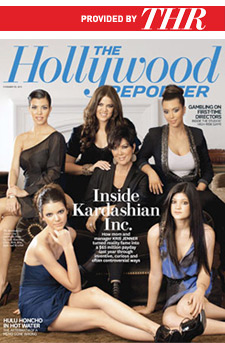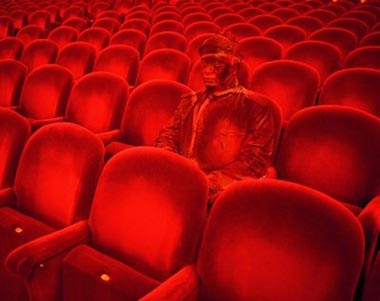Memo to men: Valentine’s Day is on February 14. In years past,
Yahoo.com has noticed a spike in men searching for an answer to the question: “When is Valentine's Day?” as the day fast approaches. Of all the holidays on the yearly calendar, the one designated for romance never fails to trip guys up. Blame mixed messages: While retailers consider the holiday worthy of diamonds, many women take the stance that it's no big deal.
Don’t fall for any of it. Valentines Day is when a guy’s affection, compatibility, and commitment are put to the test. Forgetting the day is just the first mistake to avoid. There are six other common mistakes men make on February 14. Here's a cheat sheet.
Mistake #1: Getting words of wisdom from your local drug store.
There's a time and a place for Hallmark poetry and it's never on
Valentine's Day. No matter how cursive, heartfelt, and close-to-home the text, you still didn't write it.
Why it’s bad: Women want to feel special. Giving a card that’s designed to cater to millions of women on Valentine’s Day sends the message that your love is a lot like everyone else's. It also suggests you bought some Rite Guard in the next aisle while you were at it. Nobody wants to feel like one of two birds.
The fix: Cliché as it seems, the thought really does count. More than
75 percent of women claim to want nothing more than a heart-felt love letter on February 14. Relationship psychologist Dr. Terri Orbuch also suggests a personal note trumps even chocolate. "Which says 'I love you' more: a box of candy or a handwritten note telling your partner you'd still choose him/her if you had to do it all over again?" asks Orbuch. "Show your partner why he/she matters so much to you."
Mistake #2: Letting a bear do your bidding.
Stuffed animal tricks are for kids. Giving your special lady a teddy bear holding a balloon with a pun like "I Yearn Fur You" is sweet if you're both in junior high. But in a
poll by ShopRunner, a women's shopping site, members claimed teddy bears were the
worst gift they had ever received on February 14. Flowers and chocolates (standard accompaniments to the stuffed animal) aren't going to win her over either.
Why it's bad: A stuffed animal not only suggests you don't take your partner seriously, it's also generic. Flowers, candy, and anything that's stamped "buy this for Valentine's Day" suggests limited thought went into the gift.
The fix: Don't run to your nearest jeweler. It's not about the money—besides, a dozen roses and a build-a-bear don't come cheap. "In fact, depending on where a couple is in their relationship, extravagant gifts like expensive lingerie or fancy chocolates can seem overwhelming," author and etiquette expert Leah Ingram tells
Bankrate.com. "If you've just started dating, a big gift can imply more depth to the relationship than is really there. It can also be awkward if the guy splurges on a big Valentine's gift, but the woman doesn't do the same." Instead, find a simple gift that shows you've been listening to your lady, like a DVD of her favorite series, or a book by an author she's mentioned.
Dr. Orbuch has a more direct approach: "Think of something your partner really needs," she says. "Get the car detailed. Replace her tattered briefcase. It may not sound romantic, but thoughtfulness is a turn-on and shows you really care about your partner."
Mistake #3: Declaring Valentine’s Day a ploy for consumersNo matter how you rationalize it, the holiday is not going away. Even if your partner trumps your own disdain for the day, the risk of going along with her is too great.
Why it’s bad: It feels like an excuse. Despite all the arguments against the day, it comes down to celebrating your relationship. “In the larger picture, cultural rituals like Valentine’s Day structure opportunities to do good things that we could do any day, but usually do not,” writes social scientist
Bill Doherty in Psychology Today. “The year I took my wife to Subway on February 14 was the low point. Eventually I realized that the cost of minimizing Valentine’s Day—the disappointment and the missed opportunity to connect—is greater than the benefits of maintaining my freedom to be spontaneously romantic on my own timetable.”
The fix: If if really pains you to observe the date, celebrate your valentine the day before. You can also keep it low-key. Dinner is optional. The most important thing is to set aside time to talk about things that aren't "important." "Have a 10-minute conversation with your partner about anything besides kids, work, money, or domestic responsibilities," says Orbuch. "I found that the '10 Minute Rule,' practiced daily, increases intimacy, bonding, and happiness." Take a drive or rent the movie you watched on your first date: external triggers that don't cause stress can help take you back to the way you were before your everyday lives trumped romance.
Mistake #4: Sharing the day with your BlackBerry One in five guys will text their loving message on Valentine’s Day and one in ten will take to email. That doesn't even factor Facebook and Twitter professions of love. As sweet as 140 characters can be, old-school letters are more romantic. One survey found the obvious: women would be disappointed by an electronic gesture of affection.
Why it’s bad: In terms of effort, it’s minimal. It also brings a third party into your affair: your P.D.A. (your Personal Digital Assistant, not public displays of affection). It should be a given to turn it off during your candlelit dinner, but using it to profess love is detached.
The fix: Buy a blank card or take a photo of the two of you and write a message on the back. It doesn't have to be long, it can even be a quote from your favorite song. But in this technological world, handwriting holds a certain intimacy. If words just aren't your thing, make a mix CD and write out the songs in pen. Your music choices will do the talking.
Mistake #5: Expecting her to make the plansIn the United States,
64 percent of men do not make V-day plans in advance. That can be a problem when
at least 30 percent of women expect guys to map out the entire evening, according to Women's Health. Who's right? Who cares. To avoid conflict, just make a plan.
Why it’s bad: Making plans is a sign of commitment, even if they're not exactly what your partner had in mind. The task of putting forethought into your time together suggests you see a future together. It may sound like a leap, but on
Valentine's Day, it's nothing to take lightly.
The fix: Even if you’re strapped for cash or shut out from overbooked restaurants on what might be the busiest day for reservations, there's still hope. Preparing a meal she’ll love or simply plating a prepared meal on a candle-lit table will do the job. Providing dessert and a little wine will suggest you’ve really put thought into the night, even if you just went to the supermarket.
Mistake #6: Under-dressingDon't wear jeans. No matter how well they fit, denims are not invited to your romantic evening for two.
Why it's bad: It suggests the day isn't as important to you as it it may be to her. Plus, getting a little dressed up adds an element of excitement that breaks the casual routine you may share on a standard date night. And excitement boosts oxytocin, the bonding hormone released during new, exciting activities that brings couples together.
The fix: Whether you're staying in or partying like a rock star, let Daniel Craig, aka James Bond, be your style muse, says men's fashion site
Dappered. For a night in, try casual khakis and a crisp white shirt, like Craig wore during a scene in an Italian villa in "Quantum of Solace." For a red carpet look, try a skinny tie, or a slim-lined gray suit, like Craig has donned at premieres.


























